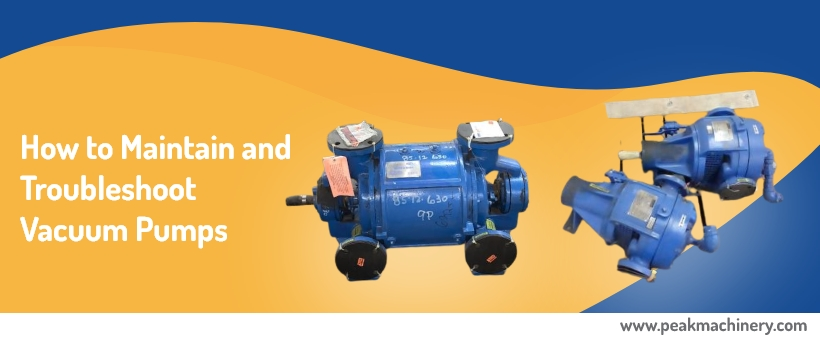A vacuum pump is a mechanical equipment that produces a partial vacuum to draw or pump out gas molecules from a sealed unit or chamber. A sealed pack has no air or gas remaining inside; hence, these pumps are used to create that perfectly sealed chamber or unit with a total absence of air inside. The sealed chamber may have liquids of varied consistencies from thin to viscous, semi-solids, pulps, slurries, and so on. Regardless of the consistency of the fluid inside, the pump must be able to function efficiently. Although this is an important requirement in all industries, this is applicable especially in the pulp & paper industry that deals with viscous pulps, semi-solids, and slurries. This post discusses the maintenance and troubleshooting tips for vacuum pumps used in pulp and paper industries.

Pointers to maintain and Troubleshoot Vacuum Pumps to Prevent Failures
Continuous use of vacuum pumps causes wear & tear and subsequent malfunctioning. Sometimes it may fail to work. Such failures lead to repair costs and also production downtime which may prove costly. We cannot completely avoid such failures; however, we can take preventative measures and perform maintenance and troubleshooting to avoid them. Here are some pointers related to maintenance and troubleshooting which may be helpful in preventing such failures.
If you are in the pulp & paper industry, you may require a good vacuum pump that can withstand harsh environments. The pump must be able to withdraw air without drawing out portions of the liquid inside. If you need a vacuum pump for any reason, ensure you source it from a reliable supplier. For a new purchase or an upgrade, Gardner Denver Nash vacuum pumps are highly recommended. Peak Machinery is a reliable supplier of new surplus, rebuilt and second hand Gardner Denver NASH vacuum pumps for the Pulp and Paper Industry as well as many other industries. Peak Machinery, Inc. stocks vacuum pumps along with a wide range of other types of industrial processing equipment for mills and plants including Blowers, Pumps, Pulpers, Pulper Drives, Gear Reducers, Pressure Screens, Control Valves, Knife Gate Valves, Electric Motors, etc. For more information or any questions you may have, do contact the team at Peak Machinery via phone (612) 810-1955 or email (sales@peakmachinery.com).